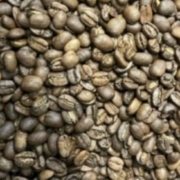Recycling Coffee Grounds in the Garden
Coffee Grounds: More Than Just Kitchen Waste
Coffee grounds are much more than just kitchen waste; they’re actually an excellent addition to your gardening work. Let’s explore how you can use this natural resource!
Valuable Nutrients for the Soil
Before you throw coffee grounds into the trash, think again! This seemingly worthless residue is actually a rich source of nutrients for your garden, including nitrogen, potassium, and magnesium, which promote healthy plant growth.
Earthworms Love Coffee Grounds
Earthworms are especially drawn to the nutrients found in coffee grounds. Sprinkle some fresh grounds on the soil, particularly in areas where there are no plants or grass. The worms will find their way and start their important work of transforming the soil.
(+1 tip: Young anglers can find bait faster in such areas, so if you have children, help them for quicker success!)
A Natural Pest Repellent
Have you tried many methods to keep slugs (especially naked slugs) away—like using watermelon or salt—but haven’t tried coffee grounds yet? It’s time! Coffee grounds are another natural method to keep unwanted guests at bay.
Using Coffee Grounds in the Garden
- In Compost: Mixed into compost, coffee grounds add nitrogen, accelerating the decomposition process.
- Directly in Soil: In small amounts, coffee grounds can be added directly to the soil without disrupting its structure, while still providing nutrients.
- In Liquid Form: Soaking the grounds in water can create nutrient-rich irrigation water.
- As Mulch: Coffee grounds can also be used as mulch when mixed with other organic materials, helping to prevent soil compaction.
Cautions
- Acidity: Some plants are sensitive to slightly acidic environments. So, avoid spreading coffee grounds around plants that prefer alkaline soil (e.g., lavender, lilies, thrift, certain shrubs, and trees). On the other hand, plants that thrive in slightly acidic environments, such as rhododendrons, azaleas, blueberries, conifers, hydrangeas, etc., will benefit from it.
- Moldy Grounds: Only use fresh, mold-free coffee grounds. You wouldn’t eat moldy food, so don’t give it to your plants either!
This blog is not written from an agricultural or horticultural science perspective, so there may be areas that are not fully explained. If you’d like to add plants that don’t thrive in acidic conditions, please share your thoughts in the comments or under the post on our Facebook page to benefit others.

